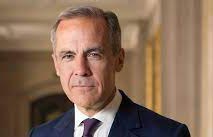Expectations are piling up on insurers to use their financial muscle to support global action to combat climate change ahead of the re-arranged COP26 summit, now due to be held in Glasgow this November.
 With Mark Carney (pictured) acting as the UN Special Envoy for Climate Action and Finance and the UK Prime Minister's Finance Adviser for COP26, an ambitious agenda for the finance sector has already been laid out with a clear expectation that regulation will be necessary. In Europe that is already happening, writes David Worsfold, Contributing Editor.
With Mark Carney (pictured) acting as the UN Special Envoy for Climate Action and Finance and the UK Prime Minister's Finance Adviser for COP26, an ambitious agenda for the finance sector has already been laid out with a clear expectation that regulation will be necessary. In Europe that is already happening, writes David Worsfold, Contributing Editor.
This week the European Insurance and Occupational Pensions Authority (EIOPA) issued new guidance on the supervision of the use of climate change scenarios in the Own Risk and Solvency Assessment (ORSA). EIOPA has set clear expectations for the future the supervision of the integration of climate change risk scenarios by insurers in their ORSAs,
It has given national regulators two years to implement the new regime, and it will almost certainly become part of any equivalence deal stuck between the UK and the European Union.
The pan-European regulator set out the reasons for its highly prescriptive approach:
“The (re)insurance industry will be impacted by climate change-related physical and transition risks. However, only a minority of insurers assess climate change risks in the ORSA using scenario analysis, usually limited to a short-term time horizon. Therefore, EIOPA considers it essential to foster a forward-looking management of these risks to ensure the long-term solvency and viability of the industry.”
It expects insurers to integrate climate change risks in their system of governance, risk-management system and ORSA, similar to all the risks undertakings are or could be exposed to.
“In the ORSA, insurers should do an assessment to identify material climate change risk exposures and subject the material exposures to a risk assessment. Climate change risks should be assessed not only in the short-term but also in the long-term using scenario analysis to inform the strategic planning and business strategy”, says EIOPA.
Insurers will be expected to subject material climate change risks to at least two long-term climate scenarios, where appropriate:
- a climate change risk scenario where the global temperature increase remains below 2°C, preferably no more than 1.5°C, in line with the EU commitments; and
- a climate change risk scenario where the global temperature increase exceeds 2°C.
EIOPA says it expects national supervisors to collect qualitative and quantitative data to perform a supervisory review of the analysis of short and long-term climate change risks in the ORSA. Instruments for data collection should be the regular supervisory reporting, most notably the ORSA supervisory report
• In the build-up to COP26, the Foreign Office organised a virtual event for global CEOs at the end of last month at which Laura Clarke, British High Commissioner to New Zealand (pictured), spoke of the role that finance, capital and investment have to play on the journey to COP26 and delivery of Paris Agreement goals. She is expected to play a key role alongside Mark Carney in the build-up to COP26.
“In practical terms - what does this transition to green, sustainable finance look like?”, asked Clarke.
“It will look like every company in every sector - every bank, every insurer, every pension fund - disclosing a transition plan to net zero. It will see the shift away from investment in fossil fuels vis-a-vis clean energy, transport and building.
“It means thinking harder about investments. It means innovating and developing new investment models. It means examining climate risk as part of portfolios. It means encouraging those seeking investment to share their transition plans.
“It means developing global standards and metrics to follow the progress against that strategy. And finally, it means detailing governance and accountability on that strategy.”
• Download Mark Carney’s pre-COP26 position paper on Building a Private Finance System for Net Zero.
